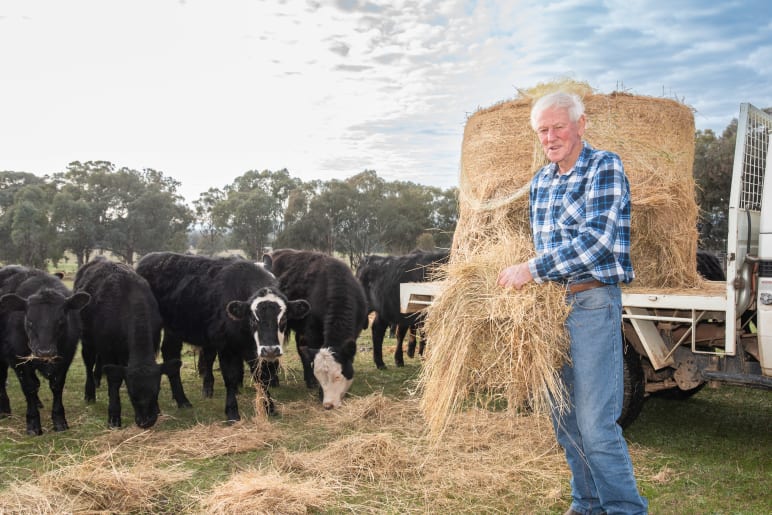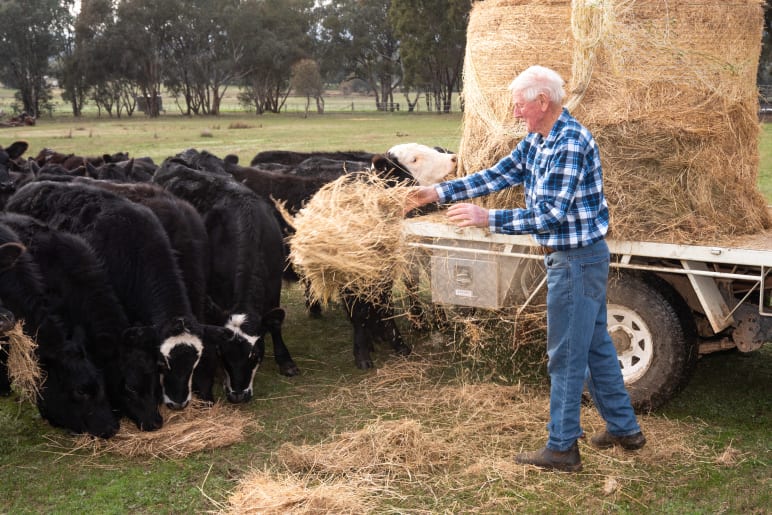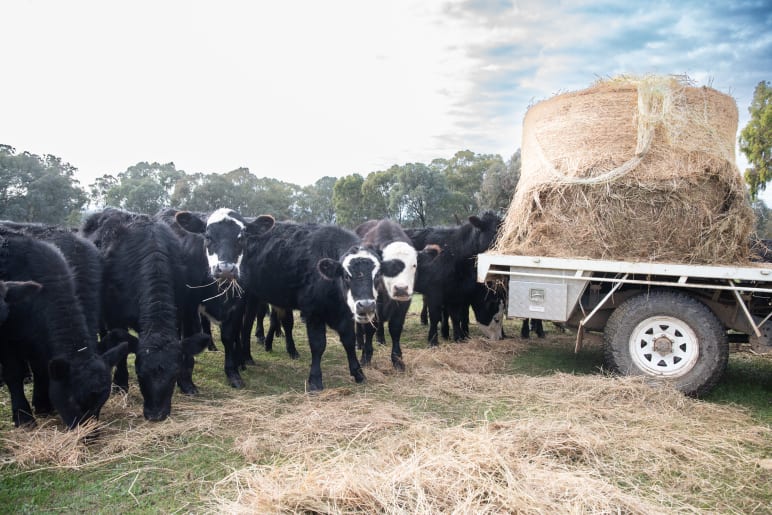LOCAL producers are continuing to feel the ripple effects of a poor autumn break.
While more than 50mm of rain has fallen in the Wangaratta region this month, severe frosts and a lack of rainfall over recent months has seen pasture growth stunted, with insufficient feed to sustain livestock.
Greta West cattle producer Stewart Thrum, who has been working on his 400-acre farm for more than 60 years with his wife Mary, is among those hardest hit, buying in feed for his stock.
“I have been a producer with my wife for a long time and we have had some very tough years, however, this year has been very frustrating on the land and the cattle sales as a result on what was a very poor autumn break,” he said.
“The end of the summer period and beginning of autumn looked promising, but as things dried out and continued to do so, the pressure has mounted ever since.
Latest Stories
“Not only do we have little feed on our property, but we have also been forced to make some changes in our strategy on how to sustain the farm, protect our future generation of cattle and make a profit moving forward.
“We currently have 85 cows and are feeding out 54 of them with two round bails per day which is an ongoing expense at $100 for each bail.
“The cost of insurance and farm expenses including hay have gone up which again, adds pressure on the farm."
Mr Thrum said some farmers have had to sell their cattle to reduce overall costs and preserve the future generation of younger stock.
“Up until the July cattle sale, prices have been well below average that have seen a lower return for farmers at the store sales creating a lack of confidence in the market," he said.
“At the July store sale at the Wangaratta Livestock Exchange my steers fetched $3.89/kg and heifers $2.94c/kg, which is up on previous months with a glimmer of hope the market is finally on the move."
According to the Bureau of Meteorology, the outlook is currently at La Niña Watch, meaning there are some signs that a La Niña may form in the Pacific Ocean by October 2024 which could see average to above average rainfall.
A La Niña Watch does not guarantee that a La Niña will develop.
Mr Thrum believes that a good monthly rainfall average in August could set the scene for later in the year.
“August is one of the most important months for farmers leading into spring,” he said.
“If we see good totals fall during this month, it will put substantial moisture in the soil that will help trigger growth in paddocks as the climate starts to warm up and we see the last of the frosts.
“These conditions coming into the warmer months will see rapid growth in paddocks and pastures, relieve the pressure of hard feed and fill the sheds and silos for next year.
“Moving forward I believe things will definitely ease later this year including more confidence building at the store sales.”














